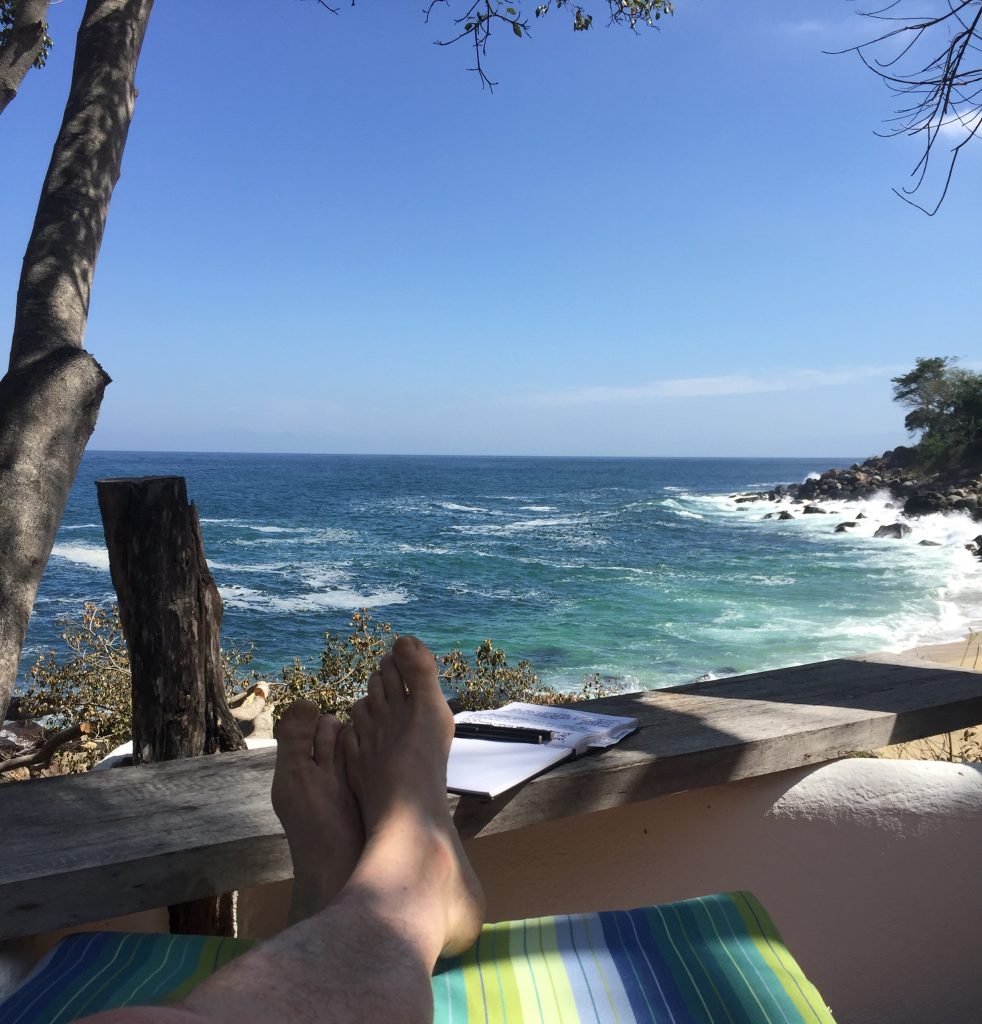An Impulse to Connect

I sit here on the Pacific Coast of Mexico watching the sea awaken in the soft pastels of the changing morning light of sunrise. The waves, stirred by a night of winds from the north rise and fall, then crash into transformative white foam, obscuring the boulders that define our boundary between land and sea. It is a continuous rhythm that defines the pulse of the experience of this place. Like a beating heart driving blood through our veins, or the breath that flows in and back, out of our lungs, this repetition reminds us that we, like this planet, are alive and in tune with each other at this most basic level. We are connected. We are, in fact, one. What a beautiful reminder that we are not alone. I breathe in micro droplets of her essence with each arriving fold. I remember that I came from, and am largely made of this infinite pool.
So what might this say about an interest in community? What do we yearn for as we go through our experience of living in a modern world? Is there an underlying call, an impulse to find connection? Where does it reside? How can we fill that void –or visit that place of belonging to something more?
We are in a time where we have more “friends,” or “likes,” or access to an infinite stream of opinions, observations, facts and fake news, but we can still feel cut off and lonely for real contact. This contact can come in various flavors, to sense of connection to nature, or what E.O. Wilson termed “biophilia” gives us an awareness of our inter-relatedness with the living planet and all of her systems and manifestations. As part of that we are deeply attracted to the other human beings that might be seen as an affinity with others. This desire to have human interaction comes by way of empathy or compassion; conversation and conviviality; or just sharing space with others so an impulse towards community is an acknowledgement that, though most of us need privacy or even quiet isolation at times, we also seek real relationship with others.
As an architect I have found these human cravings to be behind so much of what intentional space provides.
Design thinking is if nothing else a way to shape our surroundings to bring balance and harmony to our internal needs and desires. Whether this is played out in the public realm, say in the ongoing design of the livable city, or in architectural spaces that bring us together, or in deeper contact with the natural cycles we are so intertwined with.
As a presenter at the Regional Cohousing Conference, my intention is to share simple lessons learned over the last 40 years of designing for connection. In these examples I hope you’ll see ways to apply design to a room, a home, a neighborhood, or a city to encourage real experiential interaction. It might manifest in a co-housing community or a common house, but it might happen in the selection of a piece of furniture or a personal space of alignment. The possibilities for coming together are limitless. The impulse is built into it all!
David Barrett of Barrett Studio Architects is an architect whose 40-year practice has been recognized for its intent to draw from nature, as well as humanistic values of compassion, co-creation and always beauty. Some of Barrett Studio Architect’s projects are the Master Plan for Holiday Neighborhood, Greyrock Commons Co-Housing, the Abbey of St. Walburga, Eagle Rock Residential School and Professional Development Center, and Kestrel Mixed-Age Community. See more at www.barrettstudio.com
Category: Site Design
Tags: Conference, Design, Professionals
Views: 1152

